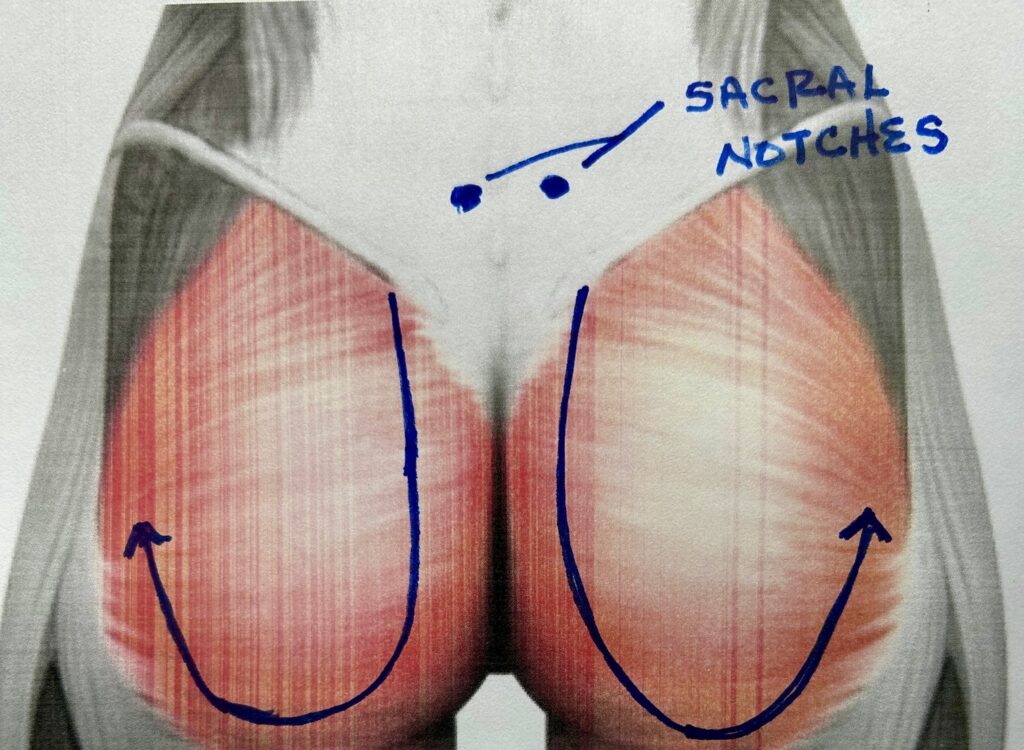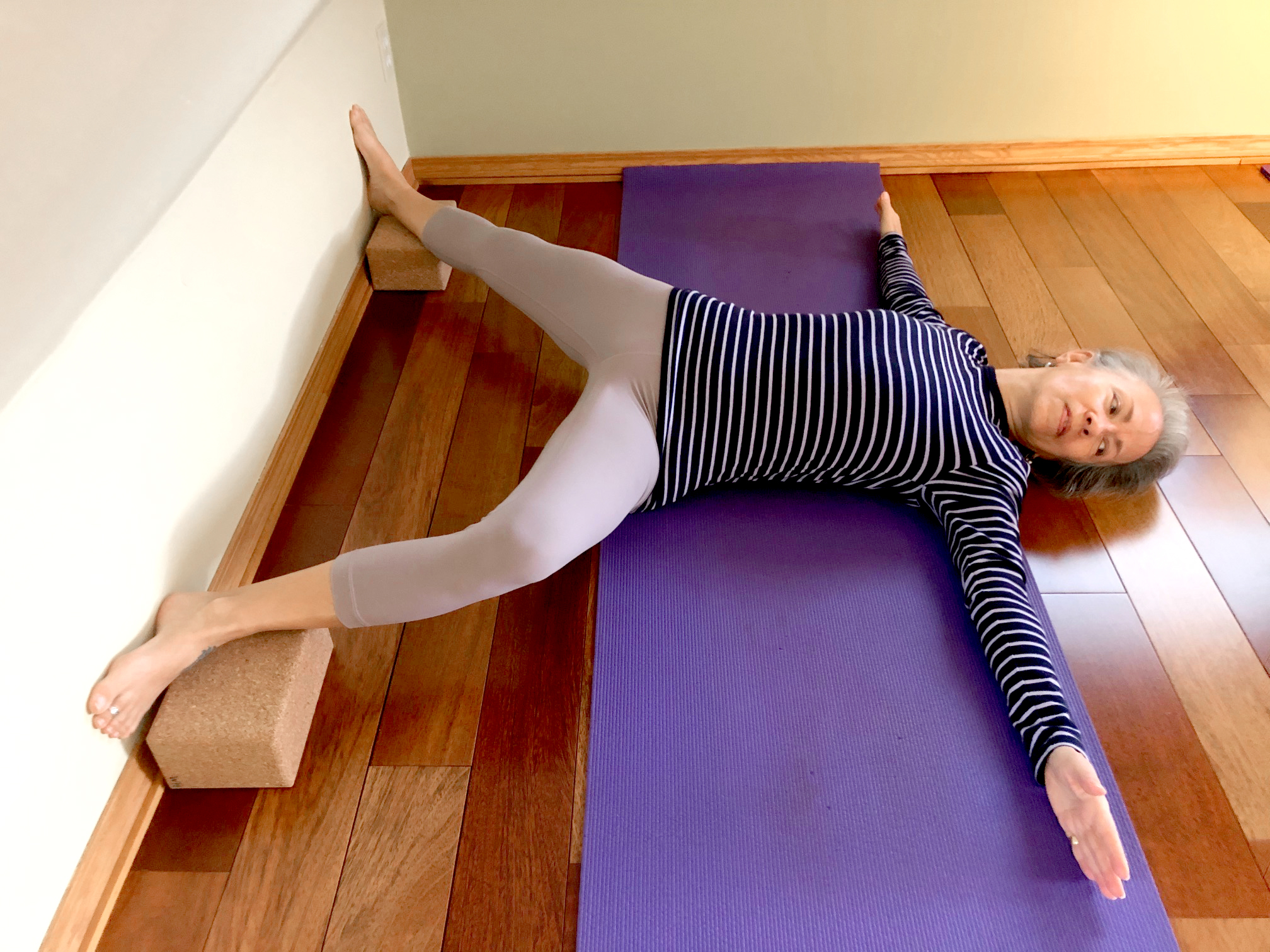The three Virabhadra poses in yoga are named after a great hero warrior in Hindu mythology. The attributes of a hero — strength, steadiness, and fierce determination — are represented in practicing each virabhadrasana with integrity.

As metaphors for overcoming our persistent patterns and conditioning, the warrior poses grow our “spiritual capacity” to meet life head on even as we face our ignorance. In Virabhadrasana I, we rise up out of our limitations. In Virabhadrasana II, we remain steady and at ease amidst chaos or attack. In Virabhadrasana III, we move forward into that which may be fearful, unjust, or unknown.
Given the complex physical, mental, and emotional challenges necessary to practice these active standing poses, many yogis grip the musculature surrounding the sacrum, buttocks, and outer hips. However, when we practice the supine variation of these poses, we are more able to consciously recognize where these holding patterns exist and to release them. To aid you in discovering your persistent patterns, practice the following yoga actions in Supta Virabhadrasana II.
Place low blocks under the heel of your back foot and the baby-toe side of your front foot. Bend into your front leg (90-degree angle, if possible). Align the crown of your head over your pelvic floor, and extend your arms in a T position. If you have the space, roll your head to look out over your front hand. Stay in the pose for 3 minutes on each side ( 1 minute to settle into the pose, 1 minute to practice the yoga actions, and 1 minute to allow the body and the Vijnanamaya Kosha (intuition) to respond with truth and wisdom. Listen and learn what life wants to show you.
Yoga Action (Annamaya Kosha):
1. Soften and broaden the dimples or notches of the sacrum — see image below.
2. Notice how the top of the sacrum nutates (moves) inward.
Yoga Action (Pranamaya Kosha):
1. Energetically, draw a line with your yoga imagination down the inside of the buttocks closest to the sacrum, around the sit bones, and continue drawing the line up the outer buttocks to the outer hips.

Yoga Action (Manomaya Kosha):
1. Silently ask yourself, “Where do I need more stability?”; “Where do I need greater ease?”
2. When you have balanced your stability and ease, rest in the pose by silently repeating “I am stable and at ease.”
NOTE: It may take more than one pose before you awaken these yoga actions or areas in your body and begin to feel the arising sensations and releases. In that case, apply these yoga actions to the following supine standing poses in the upcoming weeks.
For more yoga actions and teachings, click here. Namaste.





